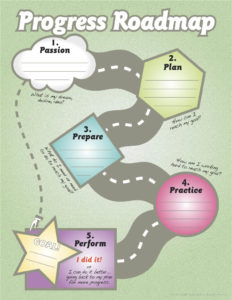My kids’ elementary school invested in a bright red Buddy Bench. The idea was that if you didn’t have someone to play with at recess, you’d sit on the bench and wait for someone to come ask you to play. One little girl liked the idea of the Buddy Bench, and at first, other kids would approach her. But after a while, they stopped, and so she stopped sitting there too. After that, the bench hardly—if ever—got any action. In fact, most kids avoided it like the plague.
This little girl went on to try other tactics to find playmates. Some worked, and some didn’t. Figuring out how to help your child make friends is something we can all relate to at one time or another. If your child is having trouble making inroads to a new friend group at school, try these 5 research-backed tricks.
1. Find kids who share common interests.
Several girls in my daughter’s class sat on the pavement at recess playing with little colorful plastic dolls. As a parent volunteer, I watched, unsure what these toys were, and my daughter, uncertain as well, steered clear. Instead, she found two girls to sit with on the tire swing and begged me to push them.
If your child feels friendless, it might be because she’s targeting the wrong people. As psychologist and author Eileen Kennedy-Moore says, “Children tend to befriend people who are similar to them.” And “the most important similarity is what they like to do.” Help your child identify fun things she likes to do and to look for others who share that interest.
Help your child identify fun things she likes to do and to look for others who share that interest. Click To Tweet2. Join four or more at play.
There are two boys in my son’s band class who are best friends. Both are quiet, but they’re nice kids. So, I’ve encouraged my son to talk to them and try to make friends. But my son says he’s had no luck. They don’t include him. I was skeptical hearing this, but then remembered “two’s company, three’s a crowd.” It’s not that those boys didn’t like my son; they just weren’t looking to expand their group.
How do you help your child make friends? Kennedy-Moore says, “Kids are more likely to be successful” joining a group of four or more. Twosomes and even threesomes might be “too tight to let anyone in.” So, encourage your child to look for larger groups.
3. Slide into the action without interrupting.
Have you ever seen a child walk up to a group and ask, “Can I play?” Maybe you’ve even encouraged it. On one hand, the kid’s brave! But on the other hand, it draws attention away from the game and to your child. You don’t want to interrupt a game and then give a mischievous child the chance to say, “No, you can’t!”
Kennedy-Moore suggests the “watch, then blend” method instead. And it’s exactly how it sounds. Watch the kids playing tag or kickball, and then look for an opportunity to blend into the group. Maybe your child can jump in when a new round of tag starts. Or she can line up for a turn to kick.
4. Play the game going on, and don’t complain!
A little boy called Noah ran over to me at recess. “They never want to play what I want!” I knew the group had been playing tag and suggested Noah join in. “If they get bored with tag, that’s when you suggest your game,” I said. As Kennedy-Moore says, “It’s not a good idea to approach a group that is busy doing one activity and immediately try to persuade them to do a different activity.”
I’ve found that one of the mysteries of parenting is figuring out how to help your child make friends when he’s feeling left out. But Kennedy-Moore’s advice resonates with me. Joining an activity that’s already happening is the best way to go—not complaining or insisting on a change.
5. Pick up on the emotional tone of a conversation and join in.
Imagine some kids sitting near your child in class. They’re talking about the upcoming science test. Your child should listen, then try to pick up on the emotional tone of the group. If everyone’s nervous about the test, she could say, “Me too! I really need to study tonight!” Or if the group’s looking forward to the school’s baseball game, she could add, “I hope we win too!”
Matching the emotional tone of the group doesn’t mean lying. “It’s about being aware and respectful of others’ feelings,” says Kennedy-Moore. If one of the kids thinks she failed a recent quiz, it’d be insensitive for your child to say, “It was easy! I’m sure I aced it!” Try role-playing scenarios with your child to help her get the idea.
Do you have a visual kid? If so, our Progress Roadmap might be helpful when discussing a plan to make friends. Download and print it for free!
Do you have some good tips on how to help your child make friends?











